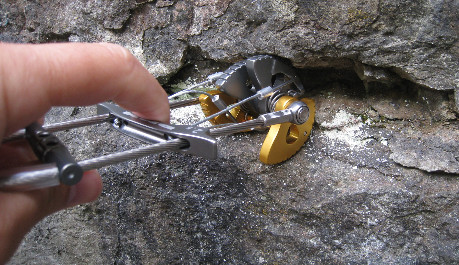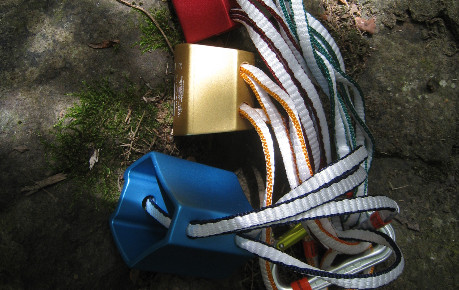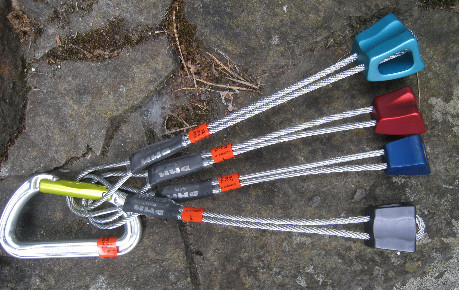This is a guide to the sort of equipment you will need to go traditional rock climbing outdoors. The exact list of equipment you use when rock climbing will vary depending on personal taste and the demands of a particular climb, but there are basic items which will be found in most climbers’ rucksacks.
Route lines in traditional outdoor climbing can be complex, with available natural protection spread unevenly, so you tend to carry more equipment to cover all eventualities. The harness and the ropes you use differ from sport climbing too.
Harness: This should have as many gear loops as possible. Sport harnesses may not have the room to carry all the gear you’ll need.
Ropes: You’ll need two 50m-long ‘half’ ropes, denoted by ‘1/2’ on the tag and 8mm to 9mm in diameter – thinner and lighter than the ones you may be accustomed to at the climbing wall or on sport climbs.
Belay plate with locking screwgate karabiner: This should be capable of taking two ropes for trad climbing

Camming device
Gear (or ‘runners’): To start with you will need a double set of ‘wires’ (sizes 1-7), a selection of at least four micro-wires, camming devices (sizes 00-3½), and a selection of ‘hexes’ or ‘chocks’ (size medium to large). This selection may be shared between two and carried by the partner who is leading a pitch. You will almost certainly add to this as you climb more.
Extenders (also known as Quick-Draws): These are short loops of webbing with a snapgate karabiner clipped into each end. You should have about 12.
Slings: You should have four 60cm (4ft) slings for clipping to belay points and extending runners.
Karabiners: You should have at least three screwgates for belays and several snapgates for general back-up.

Chocks, or hexes, on slings
Rock Shoes: You may well be wearing them all day, so comfort is important
Helmet: This is an individual choice, but it is strongly recommended that you wear a helmet for traditional climbing, especially on cliffs where stone-fall may happen, where falls might pendulum and on poorly protected climbs.
Chalk Bag and Chalk: to clip onto the back of your harness or round your waist.

Wires on a snapgate karabiner
These videos from Glenmore Lodge give useful advice on the sort of factors you should consider when purchasing your climbing gear.
2. Buying a rock climbing harness